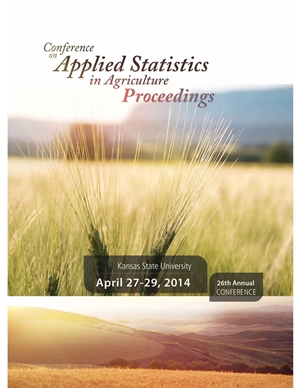Abstract
Published prediction equations for carcass lean mass are widely used by commercial pork producers for carcass valuation. These regression equations have been derived under the assumption that the predictors, such as back fat depth, are measured without error. In practice, however, it is known that these measurements are imperfect, with a variance that is proportional to the mean. In this paper, we consider both a linear and quadratic true relationship and compare regression fits among two methods that account for this error versus simply ignoring the additional error. We show that biased estimates of the relationship result if measurement error is ignored. Between our version of regression calibration and a Bayesian model approach, the Bayesian inference approach produced the least biased predictions. The benefits of our Bayesian approach also increased with an increase in the measurement error.
Keywords
Carcass composition, Proportional measurement error, Empirical Bayes
Creative Commons License

This work is licensed under a Creative Commons Attribution-Noncommercial-No Derivative Works 4.0 License.
Recommended Citation
Hass, Zachary J.; Zhou, Ziqi; and Craig, Bruce A.
(2014).
"DEVELOPING PREDICTION EQUATIONS FOR CARCASS LEAN MASS IN THE PRESCENCE OF PROPORTIONAL MEASUREMENT ERROR,"
Conference on Applied Statistics in Agriculture.
https://doi.org/10.4148/2475-7772.1509
DEVELOPING PREDICTION EQUATIONS FOR CARCASS LEAN MASS IN THE PRESCENCE OF PROPORTIONAL MEASUREMENT ERROR
Published prediction equations for carcass lean mass are widely used by commercial pork producers for carcass valuation. These regression equations have been derived under the assumption that the predictors, such as back fat depth, are measured without error. In practice, however, it is known that these measurements are imperfect, with a variance that is proportional to the mean. In this paper, we consider both a linear and quadratic true relationship and compare regression fits among two methods that account for this error versus simply ignoring the additional error. We show that biased estimates of the relationship result if measurement error is ignored. Between our version of regression calibration and a Bayesian model approach, the Bayesian inference approach produced the least biased predictions. The benefits of our Bayesian approach also increased with an increase in the measurement error.


